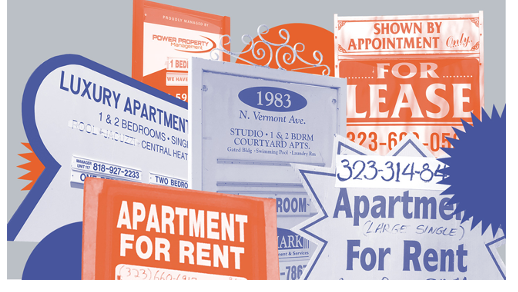CommentsPLANNING WATCH-If you went to a doctor with a serious illness, and he or she recommended an unapproved miracle cure, you might be intrigued, but once out the door, would look for another physician.
Yet, this is the approach of the Los Angeles Times and the Department of City Planning for the worsening housing crisis. They still trot out the same old evidence-free up-zoning “solutions.”
This repetition of recycled proposals was on full display this week in an LA Times editorial on housing and City Planning’s outreach materials for the update of LA’s Housing Element. They both contend that Los Angeles can cure its housing crisis – expressed as out-migration, overcrowding, and homelessness -- by watering down the city’s zoning laws. These handouts to investors are supposed to encourage them to build more housing. This induced housing boom will then reduce rents through the magic of supply and demand.
According to the LA Times latest housing editorial, “. . .Local zoning in too many cities severely restricts sites for denser housing, including apartments and town homes.” This is how LA’s paper of record recycles the baseless claim that homelessness mostly results from a housing shortage, not a money shortage for those priced out of housing.
This is the same message that LA’s Department of City Planning presented in its Housing Element webinars. This is what one LA Times letter-writer took away from this webinar.
“Recently I attended a webinar given by the city of Los Angeles Planning Department, and some of the statistics they shared underlined the need to change single-family zoning in order to house more people.
In Los Angeles, 57% of the land is used for residential housing, of which 70% is zoned for single-family homes. Last year, the largest number of new units built were for high-income residents. The average rent is way above what most people can afford, and people are living in crowded accommodations to share costs.
Changing zoning to limit single-family-only areas will allow more flexibility. The alternatives are more people on the streets or expanding the city into threatened environments. Both are unacceptable.”
While the term up-zoning never appears in the City Planning’s public materials, it is widespread through obfuscating language. For example, the draft Housing Element’s Program 121 calls for up-zoning without using the word. Ditto for Programs 46,48, 49, 50, 61, 65, and 81.
“Program 121: The Rezoning Program is anticipated to be implemented through a number of work efforts, including updates to upto16 Community Plans (four West LA plans and six SE/SW Valley plans, two Downtown plans, Boyle Heights, Hollywood, Harbor-Gateway and Wilmington), two Specific Plans (CASP and Slauson TNP), as well as at least one citywide ordinance that will create additional zoning capacity through an expansion of affordable housing incentive programs (See Program 48) or other zoning code amendments.”
Four Problems: There are at least four major problems with the LA Times and City Planning’s up-zoning solution to the housing crisis.
First, single family zoning no longer exists. Homeowners can legally build a separate, market rate 1200 square foot Senior Accessory Dwelling Unit (ADU) in their backyard. The only constraint is the location of powerlines. They can also add a separate 500 square foot Junior Accessory Dwelling Unit to their house and a small house on wheels to their backyard. Together, this means that four separate dwelling units are already permitted on lots that were previously limited to one house.
Second, Los Angeles does not have a shortage of zoning that automatically permits apartments. In Los Angeles every commercial zone and three of six manufacturing zones allow apartment buildings. As a result, the buildout of LA’s existing zoning would expand LA’s population from 3.9 to 7.2 million people. If ADU’s and density bonus options are factored in, LA’s zoning buildout population would be 9 million people.
Furthermore, LA’s Transit Oriented Guidelines allow residential developers to double a building’s size (FAR) and density, and also reduce on-site parking. These density bonuses are granted through an administrative sign-off by LA’s Department of Building and Safety. No nearby property owners or residents ever receive a notice. As for public hearings, decision-making meetings, and appeals to challenge these projects, they no longer exist. Furthermore, developers can also request more height for a project, knowing that this discretionary approval is good as gold.

Third, there is no lack of rental housing in LA. For Rent signs are on display at apartment buildings across Los Angeles, as well as in nearby cities. These vacant units will never house the homeless because the homeless cannot afford their rents. Even though LA’s minimum wage is $15/hour, a renter needs to earn $37/hour to afford a typical two-bedroom apartment in LA. To buy a basic house, an Angelino needs an annual salary of $127,000 ($61/hour), according to Curbed LA.
Fourth, up-zoning does not produce affordable housing. Up-zoning increases property values, which raises the cost of in-fill housing. Based on current trends, new market-rate houses quickly sell, while apartments have persistently high vacancy rates. While landlords now offer prospective tenants such teasers as a free month’s rate, they will never reduce rents to the point that the homeless could afford.
There is no mystery to explain the gap between vacant housing and those who need a place to live. The Vacancy Report’s explanation rings totally true.
“We are not building nearly enough affordable housing. Though luxury construction is booming, construction of affordable housing is not. Against a backdrop of mass evictions and displacement, a persistent lack of deeply affordable housing construction has led to a shortfall of more than 500,000 affordable units in Los Angeles County. The gap between the housing that is most needed and the housing that is actually being built continues to widen, intensifying an unprecedented affordable housing crisis.”
Why then are developers building expensive housing when there is a massive unmet demand for affordable housing in Los Angeles? The answer is that real estate investors know they get the highest rate of return from market rate apartments built in neighborhoods near employment, recreation, and shopping venues. This is why real estate investors lobby for up-zoning in these preferred neighborhoods and then flip their more valuable property or build luxury housing. The culprit is their business model. Like all investors, they want to maximize their profits, which also explains why they lobby for up-zoning and related zoning giveaways.
(Dick Platkin is a former Los Angeles city planner who reports on local planning issues for CityWatch. He serves on the board of United Neighborhoods for Los Angeles (UN4LA) and co-chairs the new Greater Fairfax Residents Association. Previous Planning Watch columns are available at the CityWatchLA archives. Please send questions and corrections to [email protected].) Prepped for CityWatch by Linda Abrams.















